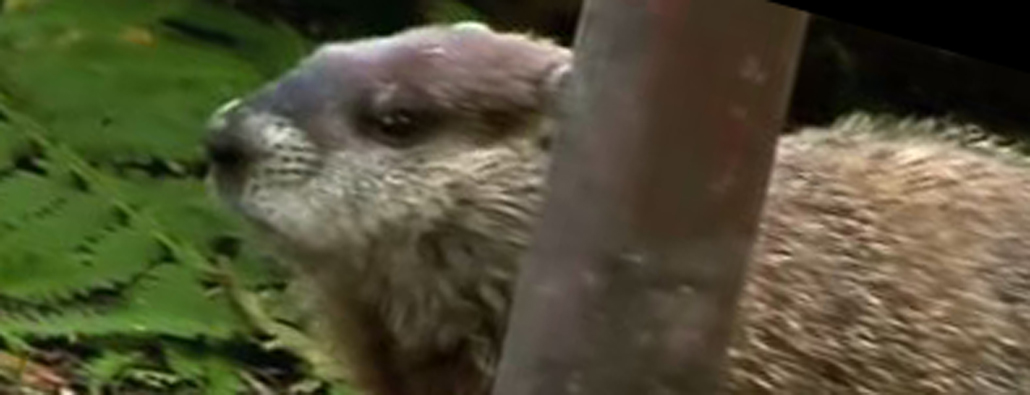- USA Wildlife Removal Education Guide - Know your Groundhogs
Know your Groundhogs

Normally growing to one and one-half to two feet long and up to nine pounds, woodchucks have been known to reach 30 inches in length and more than 30 pounds in weight. They are covered with a double coat of dense grey fur and are equipped with short powerful legs and curved, thick claws adapted for digging. The animals can live for up to six years in the wild, with an average of two or three, while in captivity they have been known to last as long as 14.
Groundhogs are primarily herbivores, eating wild grasses, clover, alfalfa, dandelion and coltsfoot as well as berries and various agricultural crops when they are available. In addition, they sometimes also eat grubs, grasshoppers, insects, snails and even other small animals, but these are not part of their primary diet. Biologists say that the animals do not drink water, but obtain their fluids from the juices of their food plants, dew and rainwater clinging to their food plants.
During daylight feeding times, one or more of the animals may stand sentry, erect on their hind feet and alert for potential danger. If one should perceive a potential threat, it can sound an alarm by means of a high-pitched whistle – hence yet another name: “whistle-pig.”
Groundhogs dwell in burrows, using them for safety, shelter, sleeping, hibernating and raising their young. The burrows can be complex and extensive, descending as much as five feet underground and consisting of multiple rooms, multiple entry/exit holes and tunnels that extend horizontal to distances of 40 feet or more.
Generally solitary, groundhogs breed in their second year, normally mating for the season. As birth of the litter approaches, the male groundhog normally leaves the den and the mother is left to bear and rear the young. Blind, hairless and helpless at birth the babies grow quickly and once their fur emerges and they are able to see, the mother ushers them outside where, once again, the father joins the family.
Groundhogs are among the most versatile of the small wild creatures. Besides their proficiency at tunneling and establishing dens, the animals are accomplished swimmers and can actually climb trees when they need to escape predators or wish to survey the surrounding area.
If you need help, we service the entire USA! Click here for a wildlife removal specialist in your town!
Go back to the main Groundhog Removal page for more information about Know your Groundhogs.

